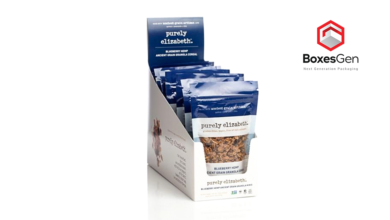Polyester (DTY) Production Cost: A Detailed Analysis
Polyester (DTY) Production Cost: A Detailed Analysis
Polyester Drawn Textured Yarn (DTY) is a type of synthetic yarn widely used in the textile industry for fabrics and garments. Known for its durability, elasticity, and versatility, DTY is produced through the texturing of polyester yarn, which gives it enhanced properties such as stretch and bulk. DTY is used in products such as clothing, upholstery, and home textiles. The Polyester (DTY) Production Cost is influenced by several factors, including raw material costs, energy consumption, production technology, and labor costs.
In this article, we will explore the major factors that influence the production cost of polyester DTY, historical trends in production costs, and future projections for the industry.
Factors Influencing Polyester DTY Production Costs
1. Raw Material Costs
The primary raw material for polyester DTY production is polyethylene terephthalate (PET), which is derived from purified terephthalic acid (PTA) and monoethylene glycol (MEG). The prices of these raw materials are closely linked to the global petrochemical market, and fluctuations in oil prices and feedstock availability directly impact the production cost of DTY.
Purified Terephthalic Acid (PTA)
PTA is one of the key precursors in the production of polyester. It is derived from paraxylene (PX), which in turn is a product of crude oil refining. Any changes in global crude oil prices or supply disruptions in the paraxylene market can affect PTA prices. Increases in oil prices lead to higher PTA costs, directly impacting the production cost of polyester DTY.
Request For Free Sample: https://www.procurementresource.com/production-cost-report-store/polyester-dty/request-sample
Monoethylene Glycol (MEG)
MEG, another essential component of polyester production, is derived from ethylene, which is produced from either natural gas or crude oil. The price of MEG is influenced by global ethylene supply and demand, as well as oil and gas prices. Any fluctuation in the cost of ethylene or its derivatives can increase MEG prices, thereby raising the overall production cost of polyester DTY.
Market Conditions and Availability
Supply chain issues, geopolitical tensions, or natural disasters that disrupt the availability of PTA, MEG, or their feedstocks can cause sudden spikes in raw material costs. Additionally, demand for PET from other industries, such as packaging, can create competition for raw materials, leading to price increases and higher DTY production costs.
2. Energy Costs
Energy consumption is a significant cost factor in the production of polyester DTY. The production process involves multiple stages, including polymerization, extrusion, spinning, and texturing, all of which are energy-intensive.
Electricity and Fuel Costs
Electricity is required to power the machinery used in spinning, drawing, and texturing processes. Rising electricity costs, especially in regions where energy prices are volatile, can significantly increase the cost of DTY production. Fuel, such as natural gas or coal, may also be used to generate the heat necessary for the polymerization and spinning processes.
Energy Efficiency
Producers who invest in energy-efficient technologies can reduce energy consumption and lower their production costs. However, the initial capital investment in energy-efficient equipment, such as modern extrusion or spinning machines, can be substantial. In the long run, energy efficiency helps lower operating costs and improve the profitability of DTY production.
3. Production Processes and Technology
The production of polyester DTY involves several processes, each contributing to the overall cost of production. Advances in production technology can improve efficiency, reduce waste, and lower costs.
Polymerization and Spinning
The first step in polyester DTY production is the polymerization of PTA and MEG to produce polyester chips or melt, which is then extruded into filaments. This process requires precise temperature and pressure control, as well as high-quality raw materials to ensure the production of uniform and strong filaments. Any inefficiencies in the polymerization or spinning process can lead to waste, which increases production costs.
Texturing and Drawing
The drawn textured yarn (DTY) is produced by mechanically stretching the polyester filaments and applying heat to create crimp and bulk. This process enhances the elasticity and texture of the yarn, making it suitable for a variety of textile applications. The cost of drawing and texturing depends on the speed and efficiency of the machinery, as well as the energy required to heat and cool the yarn during processing. Modern texturing machines that can produce high volumes of yarn with minimal waste help reduce production costs.
Automation and Technological Advancements
Automation in DTY production can improve efficiency and reduce labor costs. Automated machinery that controls polymerization, spinning, and texturing processes can operate with minimal human intervention, reducing the need for skilled labor. Additionally, advances in technology, such as improved spinning techniques or higher-speed texturing machines, can reduce production time and increase output, thus lowering the per-unit cost of DTY production.
4. Labor Costs
Labor costs are a key factor in the production of polyester DTY, particularly in regions where wages are high or labor shortages exist. The level of automation in the production process also determines the reliance on manual labor.
Skilled vs. Unskilled Labor
Producing polyester DTY requires skilled operators to monitor and control machinery, manage quality control, and maintain equipment. In regions with high labor costs, wages for skilled workers can significantly increase the cost of production. However, the use of automated systems can reduce the need for manual intervention, lowering overall labor costs.
Workforce Efficiency
Improving workforce efficiency through training and process optimization can help reduce labor costs. In some regions, manufacturers may invest in training programs for workers to ensure high productivity and minimal downtime, which can result in lower overall production costs.
5. Environmental Regulations and Compliance Costs
The polyester production process generates emissions and waste, particularly in the form of greenhouse gases, chemical effluents, and solid waste. Manufacturers must comply with environmental regulations, which can increase production costs.
Emissions Control and Waste Management
The production of polyester involves the release of carbon dioxide (CO₂), volatile organic compounds (VOCs), and other emissions. Compliance with regulations regarding air pollution, wastewater discharge, and hazardous waste disposal requires investment in emissions control technologies and waste treatment facilities. These investments increase both capital and operational costs.
Sustainability Initiatives
Many manufacturers are adopting more sustainable production practices to reduce their environmental impact. This may involve using recycled polyester (rPET) or investing in energy-efficient technologies. While these initiatives can help reduce long-term costs and appeal to environmentally conscious consumers, they often require significant upfront investment, raising production costs in the short term.
6. Packaging, Transportation, and Logistics
Once the polyester DTY is produced, it must be packaged and transported to customers. The cost of packaging, shipping, and logistics varies depending on market conditions and the distance between production facilities and end-users.
Packaging Costs
DTY is typically packaged in cones or spools for ease of handling and transportation. The cost of packaging materials, such as cardboard, plastic, or metal containers, adds to the overall production cost. Additionally, high-quality packaging is required to prevent damage during transportation.
Transportation and Shipping Costs
Transportation costs, particularly for international shipping, can be significant. Rising fuel prices and shipping container shortages can drive up logistics costs. In some cases, export duties or tariffs may further increase the cost of delivering DTY to international markets.
Historical Trends in Polyester DTY Production Costs
1. Pre-2010 Period: Stable Production Costs
Before 2010, polyester DTY production costs were relatively stable, with moderate fluctuations driven by changes in oil prices and global demand for textiles. The polyester market was expanding, particularly in Asia, where labor costs were low, and energy was relatively affordable. Manufacturers were focused on improving production efficiency through incremental technological advancements.
2. 2010-2015: Rising Raw Material Costs
Between 2010 and 2015, polyester DTY production costs increased due to rising raw material prices, particularly for PTA and MEG, which are closely linked to oil prices. The volatility of oil prices during this period led to higher costs for polyester producers. Additionally, environmental regulations in key markets such as China and Europe became more stringent, requiring manufacturers to invest in emissions control and waste management systems.
3. 2016-2019: Technological Advancements and Cost Optimization
From 2016 to 2019, manufacturers invested in new technologies to improve the efficiency of DTY production. Automation and advanced spinning and texturing equipment helped reduce labor and energy costs, leading to more competitive pricing for polyester DTY. However, raw material prices remained volatile due to fluctuations in oil and petrochemical markets.
4. 2020-2021: COVID-19 Pandemic Impact
The COVID-19 pandemic in 2020 disrupted global supply chains, leading to shortages of key raw materials and higher transportation costs. Polyester DTY production was affected by labor shortages, factory closures, and logistical bottlenecks. As economies began to recover in late 2020 and 2021, demand for polyester DTY rebounded, but producers faced higher costs due to rising oil prices and supply chain disruptions.
5. 2022-2023: Geopolitical Tensions and Rising Energy Prices
In 2022 and 2023, polyester DTY production costs surged due to rising energy prices and geopolitical tensions, particularly the Russia-Ukraine conflict. The cost of oil and natural gas, which are key inputs in the production of PTA and MEG, increased significantly, driving up raw material costs. Additionally, supply chain disruptions and rising transportation costs further contributed to higher production expenses for DTY manufacturers.
Contact Us:
Company Name: Procurement Resource
Contact Person: Leo Frank
Email: sales@procurementresource.com
Toll-Free Number: USA & Canada — Phone no: +1 307 363 1045 | UK — Phone no: +44 7537 132103 | Asia-Pacific (APAC) — Phone no: +91 1203185500
Address: 30 North Gould Street, Sheridan, WY 82801, USA





